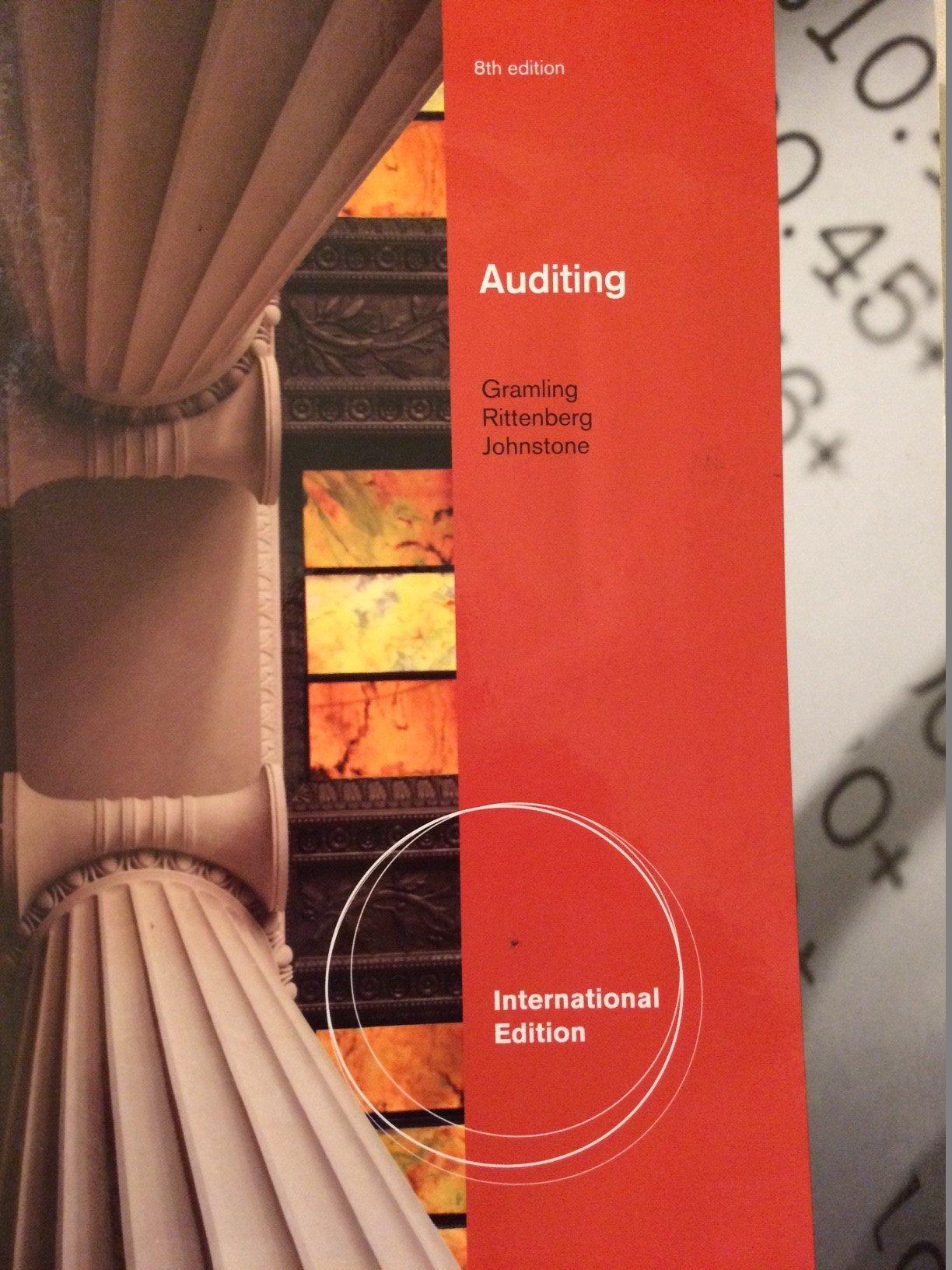Question
1. Within the context of quality control, the primary purpose of continuing professional education and training activities is to enable a CPA firm to provide
1.
Within the context of quality control, the primary purpose of continuing professional education and training activities is to enable a CPA firm to provide personnel within the firm with:
Technical training that assures proficiency as an auditor.
Professional education that is required in order to perform with due professional care.
Knowledge required to fulfill assigned responsibilities and to progress within the firm.
Knowledge required in order to perform a peer review.
2.
Passage of the Sarbanes-Oxley Act led to the establishment of the:
Auditing Standards Board.
Accounting Enforcement Releases Board.
Public Company Accounting Oversight Board.
Securities and Exchange Commission.
3.
Which of the following is least likely to be directly examined in an inspection performed by the PCAOB?
Audit engagements.
Review engagements.
Compilation engagements.
CPA firm quality control system.
4.
Which of the following is not an underlying premise of an audit?
Management must provide the auditor with all information relevant to the preparation and fair presentation of the financial statements.
Management and the auditors have responsibility for the preparation of financial statements in accordance with the applicable financial reporting framework.
Where appropriate, the auditor may obtain information from those charged with governance.
The auditors should be provided unrestricted access to those within the entity from whom the auditor determines it necessary to obtain audit evidence.
5.
Which of the following statements best describes the primary purpose of Statements on Auditing Standards?
They are guides intended to set forth auditing procedures which are applicable to a variety of situations.
They are procedural outlines which are intended to narrow the areas of inconsistency and divergence of auditor opinion.
They are authoritative statements, enforced through the Code of Professional Conduct.
They are interpretations which may be useful guidance to auditors.
6.
A summary of findings rather than assurance is most likely to be included in a(n):
Agreed-upon procedures report.
Compilation report.
Examination report.
Review report.
7.
Operational auditing is primarily oriented toward:
Future improvements to accomplish the goals of management.
The accuracy of data reflected in management's financial records.
The verification that a company's financial statements are fairly presented.
Past protection provided by existing internal control.
8.
A requirement to design recruitment processes and procedures to help the firm select individuals meeting minimum academic requirements established by the firm is an example of a quality control procedure in the area of:
Acceptance and continuance of client relationships and specific engagements.
Engagement performance.
Human resources.
Relevant ethical requirements.
9.
An audit should be designed to obtain reasonable assurance of detecting material misstatements due to:
Errors.
Errors and fraud.
Errors, fraud, and noncompliance with laws with a direct effect on financial statement amounts.
Errors, fraud and noncompliance with all laws.
10.
Which of the following are issued by the Securities and Exchange Commission?
Accounting Research Studies.
Accounting Trends and Techniques.
Industry Audit Guides.
Financial Reporting Releases.
11.
If noncompliance with a law is discovered during the audit of a publicly held company, the auditors should first:
Notify the regulatory authorities.
Determine who was responsible for the noncompliance.
Intensify the examination to identify noncompliance with any laws.
Report the act to high level personnel within the client's organization and to the audit committee.
12.
An audit performed in accordance with generally accepted auditing standards generally should:
Be expected to provide absolute assurance that noncompliance with all laws will be detected where internal control is effective.
Be relied upon to disclose violations of truth in lending laws.
Encompass a plan to actively search for all illegalities which relate to operating aspects.
Not be relied upon to provide absolute assurance that all noncompliance with laws will be detected.
13.
Which of the following types of services is generally provided only by CPA firms?
Tax audits.
Financial statement audits.
Compliance audits.
Operational audits.
14.
An engagement review form of peer review is least likely to include a peer reviewer's detailed analysis of:
Compilation reports.
Documentation of procedures followed on a review.
Overall system of quality control.
Review reports.
Step by Step Solution
There are 3 Steps involved in it
Step: 1

Get Instant Access to Expert-Tailored Solutions
See step-by-step solutions with expert insights and AI powered tools for academic success
Step: 2

Step: 3

Ace Your Homework with AI
Get the answers you need in no time with our AI-driven, step-by-step assistance
Get Started


